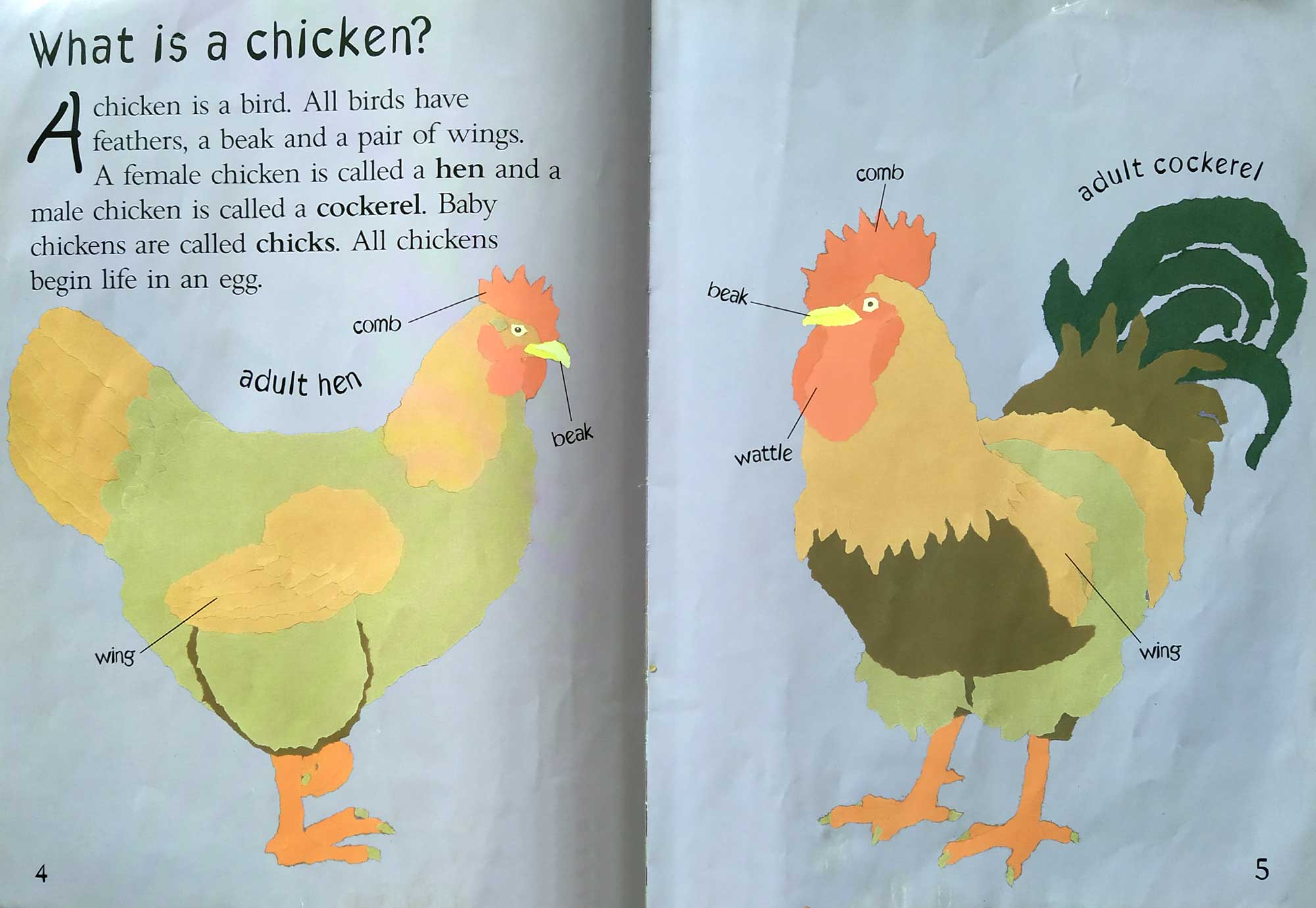It’s no secret I love talking to people about all things chickens. I get so many great questions from people who are genuinely interested in these feathery friends! Of course, they usually ask about Happy or Roxanne, if I have the fluffy chickens (Silkies) and how many chickens are in my flock. But I also got some questions that surprised me.
I’m a firm believer that there are no bad questions. Next to “How do you keep your chickens warm in the winter?” I often get “Do you need a rooster for your hens to lay eggs?” and once, “Do hens nurse their chicks?” Haha! That made me laugh, but again, there were no stupid questions, so I just told them no, they didn’t! But here are some answers to the questions you might have about roosters and eggs:
Have you ever cracked open an egg and wondered how the yolk and white magically turn into a fluffy little chick? It’s an astounding process! As an egg lover and backyard chicken enthusiast I set out to uncover the secrets of how an egg grows into a chicken.
In this article, we’ll explore the step-by-step journey, looking at how a single fertilized cell becomes a complex living creature. Understanding embryo development gives us appreciation for the incredible biology behind something we take for granted – the eggs on our breakfast table.
Fertilization – Life Begins
The miracle starts when a rooster fertilizes an egg cell from the hen’s ovary. Sperm enters the ovum and unites their genetic material into a single new cell called a zygote. This moment of fertilization contains all the DNA and instructions needed to build a new chicken.
Through a process called cleavage, the zygote starts to divide into many cells. A blastoderm is the small group that forms and floats on top of the yolk.
Three Primary Layers – The Foundation
The blastoderm’s cells rearrange into three separate layers that will become important structures. This is called gastrulation.
The outer ectoderm will form the nervous system, skin, feathers, and more. The mesoderm, or middle layer, develops into muscles, bones, and organs. Finally, the endoderm (inner layer) becomes the chick’s digestive system.
Organ Development – Taking Shape
The next phase of rapid development is called organogenesis. The three germ layers transform into the tiny beginnings of organs and body parts. A beating heart forms eyes develop, the neural tube grows into a brain and spinal cord. Legs begin to bud as the body blueprint emerges.
Nutrition and Protection – Designed for Growth
To nurture the embryo during its evolution, the egg contains a perfect environment.
-
The protein- and fat-rich yolk gives the chick a lot of nutrients that it absorbs slowly as it grows.
-
Thick albumen (egg white) supplies additional nourishment and cushions the embryo.
-
The calcified eggshell safeguards the embryo and allows gas exchange.
-
Chalazae anchor the yolk in place.
-
An air cell provides oxygen for breathing before hatching.
Incubation – Maintaining the Ideal Conditions
Three key factors are necessary for the chick to grow: temperature, humidity, and ventilation.
-
Hens maintain a cozy 99-102°F by sitting on the eggs and rotating them.
-
The 21-day incubation period allows all organs to fully develop.
-
Humidity is carefully regulated by the hen as she senses the embryo’s needs.
-
Gas exchange through the shell provides oxygen and releases carbon dioxide.
Hatching – Ready to Meet the World!
When the chick is almost ready to hatch, it gets ready to break free of its calcium fortress by using the egg tooth, a temporary sharp tip on its beak. It will chip away at the shell from the inside, which is called pipping.
Once the chick creates a small hole, it will continue pecking and rotating, gradually creating an opening large enough to squeeze through. This can take many hours of hard work!
Finally, a wet fuzzy chick emerges. Shortly after drying off and fluffing its downy feathers, the newly hatched chick is ready to eat, drink, and explore its surroundings.
And there you have it – the incredible 21-day transformation from single cell to baby chicken! It’s a scientific wonder we get to enjoy every morning. Next time you crack an egg, take a moment to appreciate the intricate biology that produced this perfect protein package.
Frequently Asked Questions
How does the rooster fertilize the egg?
Fertilization happens internally before the shell forms. The rooster transfers sperm to the hen and sperm enters the ovum in the oviduct.
What happens if an egg isn’t fertilized?
If not fertilized, an egg contains only yolk and white and won’t develop. These are the eggs we eat – no harm done!
Do eggs need to be turned while incubating?
Yes, turning is important to prevent sticking to the shell and ensure the embryo gets uniform heating. Hens instinctively turn eggs frequently.
What temperature is required for incubation?
99-102°F is optimal. This is the temperature beneath the broody hen. Incubators are designed to maintain this range.
How does the chick get oxygen inside the egg?
Shell pores allow oxygen in and carbon dioxide out. The air cell at the large end provides an oxygen reserve just before hatching.
What causes embryo death during incubation?
Causes include improper temperature, inadequate humidity, poor ventilation, bacterial contamination, and genetic defects.
How does the chick break out of a hard eggshell?
Using a specialized egg tooth, the chick repeatedly pecks and rotates to gradually chisel an opening large enough for it to emerge.
What do chicks eat after hatching?
Chicks need starter feed high in protein for growth, as well as fresh water. The yolk also provides nutrients for a couple days after hatching.
Understanding the incredible 21-day transformation from single cell to chick gives us appreciation for the biology behind the breakfast staple we call eggs. Next time you crack one open, take a moment to reflect on the amazing process of how an egg grows into a chicken.

Do Chickens Need a Rooster to Lay Eggs?

My very first time hatching eggs was 4 years ago. I got these fertilized eggs from Alabama Silkies.
I get this question a few times a year. The answer is no! You don’t need a rooster for a hen to lay an egg. Hens will lay one egg every 24 hours all on their own. However, if you want to hatch out chicks, you do need a rooster.
To produce an egg, chickens need an average of 12-16 hours of light, adequate calcium and a good diet. The whole process of forming an egg inside a hen is absolutely incredible!.
How Do Roosters Fertilize Eggs?
A rooster and a hen mate by transferring sperm from the rooster to the hen through a process known as “cloacal contact.” ” This occurs when their cloacas, the common opening for reproductive and digestive tracts, make contact, allowing for the transfer of sperm from the male to the female.
The sperm can live for a few weeks inside the hen and be ready to fertilize any eggs the hen lays during that time. If an egg has been fertilized, the embryo begins to develop within it.
It’s important to know that the eggs we eat (whether they come from the store or your coop if you don’t have a rooster) are not fertilized. But you can also eat a fertilized egg as long as it’s still fresh and hasn’t been incubated. In fact, fertilized eggs look and taste just like unfertilized ones (see the comparison below).
